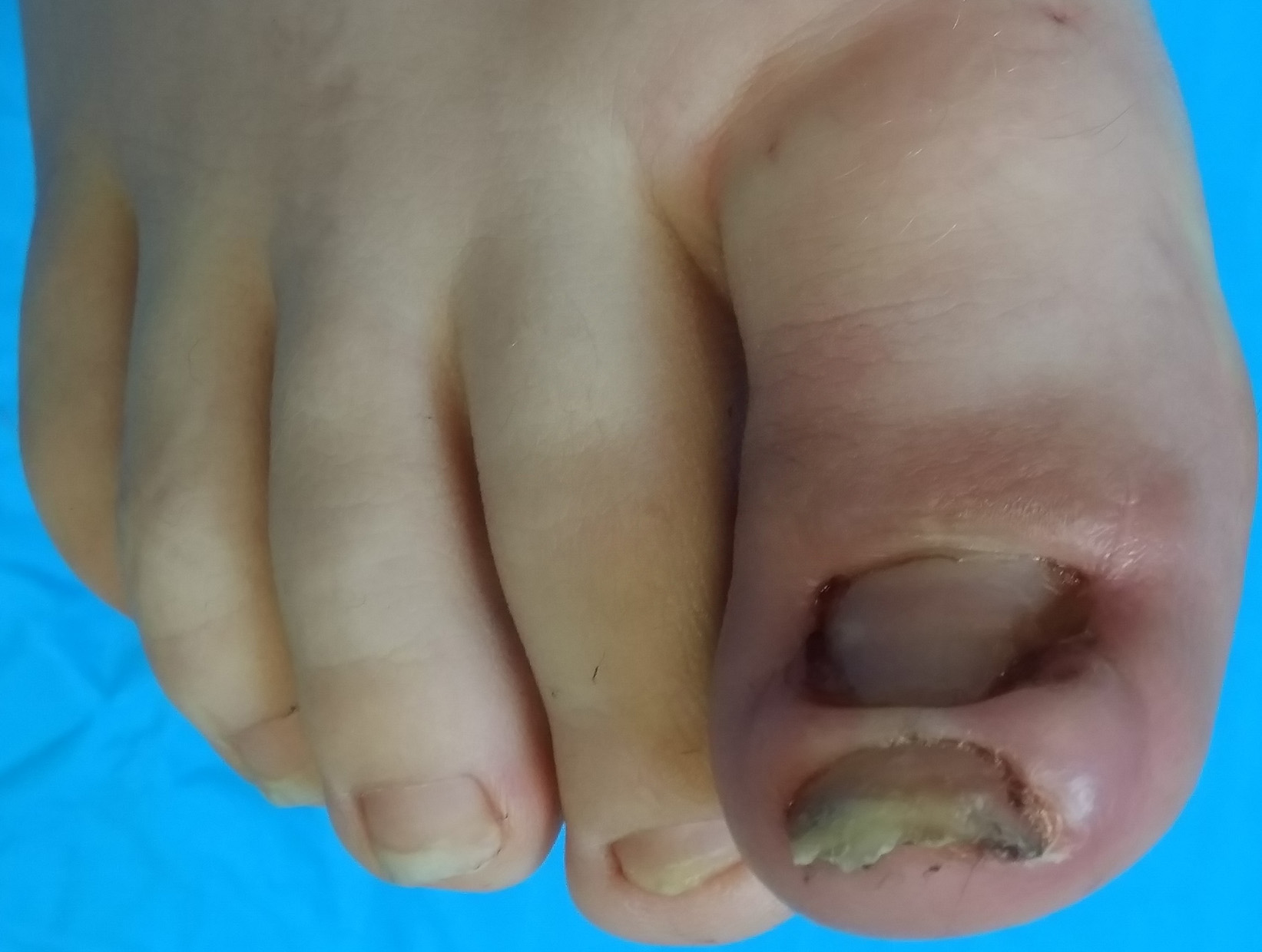Skin bridge secondary to onychocryptosis.

Downloads
DOI:
https://doi.org/10.26326/2281-9649.30.4.2185How to Cite
Abstract
The ingrown toenail of the big toe is a non-exceptional condition in children. When not treated properly it can become chronic. As in our case, the fear of the needle and the scalpel, which is frequent in children, can contribute to the chronicity. When chronic onychocryptosis is not treated adequately, it can be responsible for fibrous lesions, skin bridges and keloids (1, 4). Although few cases of supraungual skin bridges have been described so far, it is known that hypertrophic granulation tissue can give rise to fibrous tissue covered by epidermis and then to skin bridges that join the two lateral folds (3).
Two pathogenetic mechanisms have been hypothesized for this condition as follows: fusion of the highly inflamed lateral folds and penetration of the nail plate into the distal nail groove (2).
